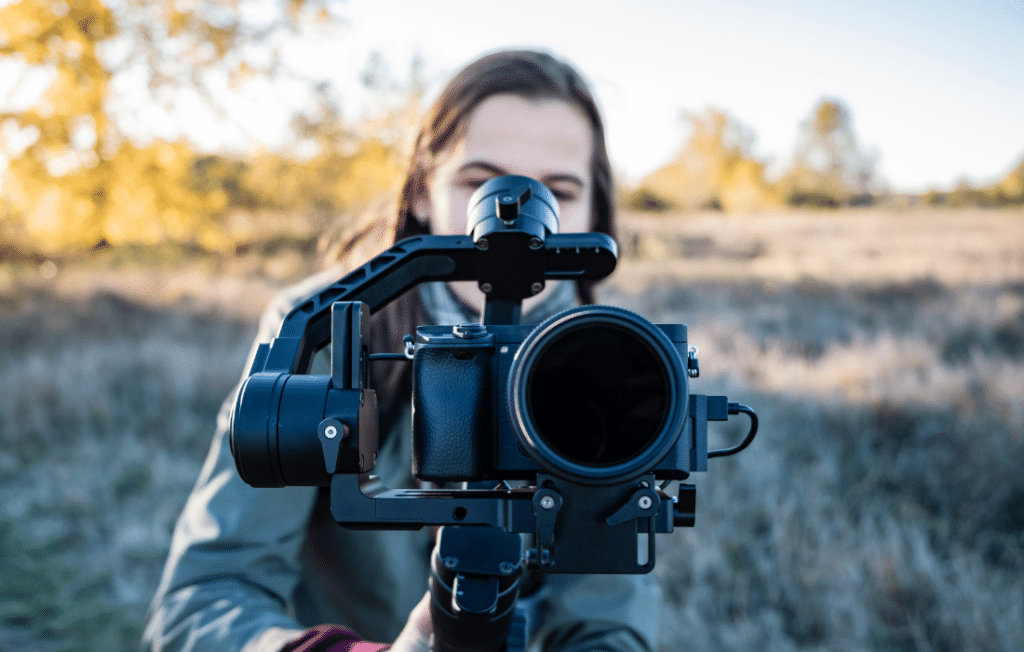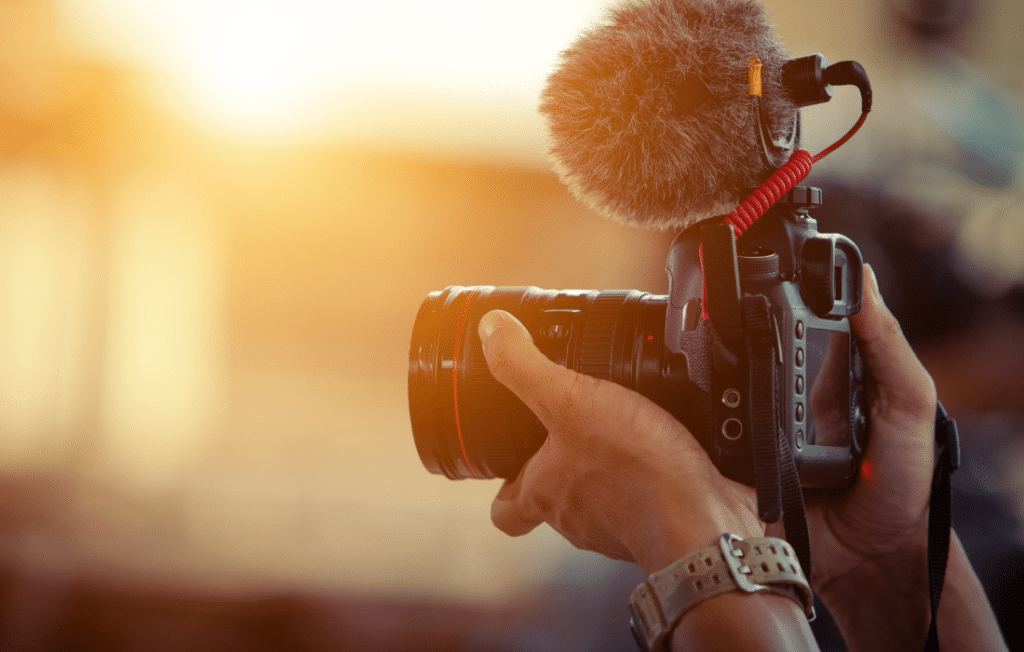What is IBIS in a camera?
Article by Colette Nichol, Solo Filmmaker and Story Strategist
What is IBIS in a camera?
IBIS works by moving the camera’s image sensor. The sensor is mounted on a movable platform inside the camera body and can be moved side to side, up and down, or even rotated slightly.
This movement can counteract the motion of the camera, keeping the image projected onto the sensor more stable and counteracting unwanted camera movement or wobble.

If you don’t want to have to use a gimbal for shooting handheld then having a camera with IBIS is very helpful indeed!
IBIS is helpful for photographers and videographers who are working without tripods.
The main advantage of in-body image stabilization is that it can work with any lens attached to the camera. This is in contrast to lens-based image stabilization systems (like Canon’s IS or Nikon’s VR), which require each lens to have its own stabilization system. This can make IBIS particularly valuable if you have many lenses, especially older or less expensive ones that don’t have their own stabilization.
It’s worth noting that while image stabilization can be very helpful in many situations, it can’t prevent motion blur caused by a moving subject, or eliminate the need for a tripod in very low light conditions or for very long exposures. Also, not all in-body stabilization systems are equally effective.
Some may only compensate for a couple types of motion (like up/down and side/side), while others can also compensate for rotation.
Do I need IBIS on my camera?
In-Body Image Stabilization (IBIS) isn’t a necessity for all photographers, but it can be beneficial.
If you frequently shoot in low-light conditions, or do a lot of handheld shooting without a tripod, IBIS can help to reduce the blurring caused by camera shake, thus improving the sharpness of your photos. If your style of photography doesn’t involve these scenarios, then you might not need IBIS.

What are the cons of IBIS?
While IBIS has numerous benefits, there are also some drawbacks:
Cost: Cameras with IBIS tend to be more expensive than those without it.
Weight and size: To accommodate the IBIS mechanism, cameras can become slightly bulkier and heavier.
Battery life: IBIS requires power, which can lead to a decrease in battery life.
Potential for damage: The mechanical nature of IBIS means there are more moving parts in the camera, potentially leading to higher repair costs if damaged.

Is IBIS better than lens stabilization?
Whether IBIS or lens stabilization (Optical Image Stabilization – OIS) is better largely depends on the situation.
IBIS works by moving the sensor, thus it can stabilize the image across all lenses used with the camera. On the other hand, OIS works by moving a group of lens elements to compensate for shake.
OIS can be more effective for longer focal lengths, and it also provides a stabilized view through the viewfinder in DSLRs. However, IBIS has the advantage of working with any lens, even older or manual lenses that don’t have built-in stabilization. In recent years, some manufacturers offer cameras and lenses that work together, using both IBIS and OIS, to achieve even better stabilization.
Which cameras have IBIS?
Many camera models from various manufacturers have IBIS. Some cameras that have IBIS include:
Sony’s A7 and A9 series (e.g., Sony A7 III, Sony A9 II)
Nikon’s Z series (e.g., Nikon Z6, Nikon Z7)
Canon’s R series (e.g., Canon EOS R6, Canon EOS R5)
Panasonic’s Lumix series (e.g., Lumix GH5, Lumix S1)
Fujifilm’s X series (e.g., Fujifilm X-T4)
Olympus’s OM-D series (e.g., Olympus OM-D E-M1 Mark III)
Remember, new models are continually being released, so it’s always a good idea to check the latest specifications from the manufacturers or trusted photography gear sources.
More Filmmaking Articles:
- 17 Filmmaking Mistakes that Make Low-Budget Movies Look Cheap
- Top Filmmaking Basics Every Beginner Needs to Know
- Cinematic Lighting for Filmmaking
- What is a Master Shot in Filmmaking?
Learn Filmmaking and Get the Gear Guide
If you’re interested in learning filmmaking, check out the Solo Filmmaking Mentorship Program I created for aspiring filmmakers and video creators. It usually goes live once per year. So I recommend getting the Story Envelope Filmmaking letter which comes out a couple of times per month. That way, you can get filmmaking tips for free and find out when the filmmaking course is going live again.
Also, before you go, grab the Solo Filmmaking Gear Guide and Checklist for Beginners.

About the Author
Hi! I’m Colette Nichol. I’m a solo filmmaker and story strategist based out of rainy Vancouver, Canada. I’ve been making videos and micro films for small businesses and global brands since 2014.
Plus, I LOVE to help aspiring filmmakers pursue their dreams and start making films. This blog is designed to help you gain the knowledge you need to become a filmmaker.
If you want more, get on the waitlist for the Story Envelope Academy Solo Filmmaking Mentorship Program. It opens up one time per year and is the best way to become a filmmaking or video pro fast!
CLICK HERE to get on the solo filmmaking mentorship waitlist.